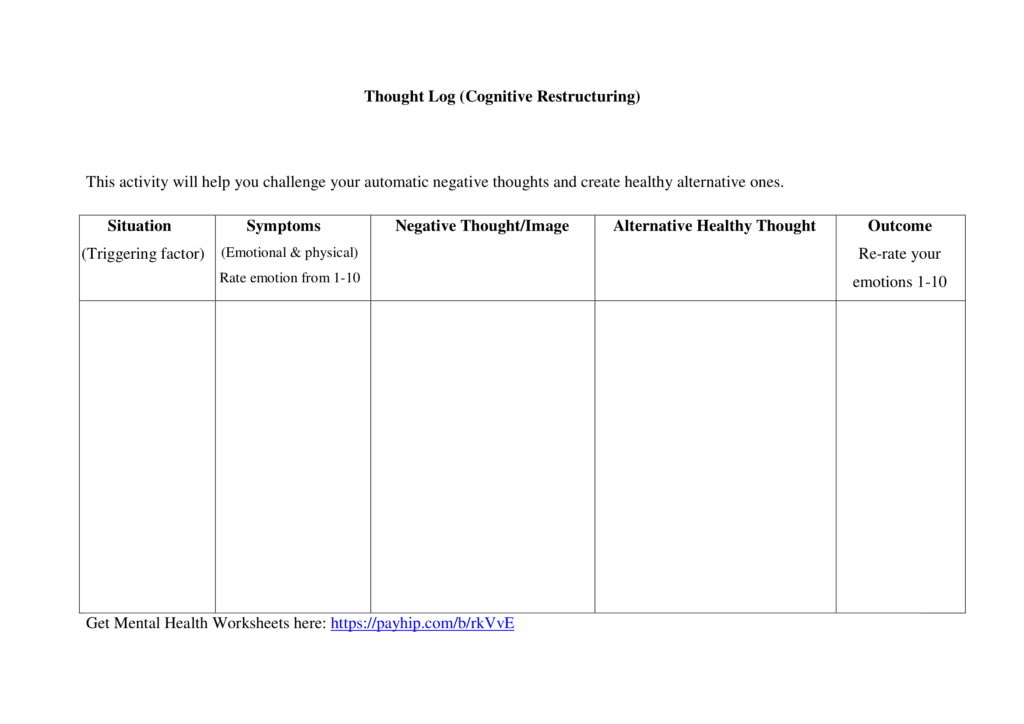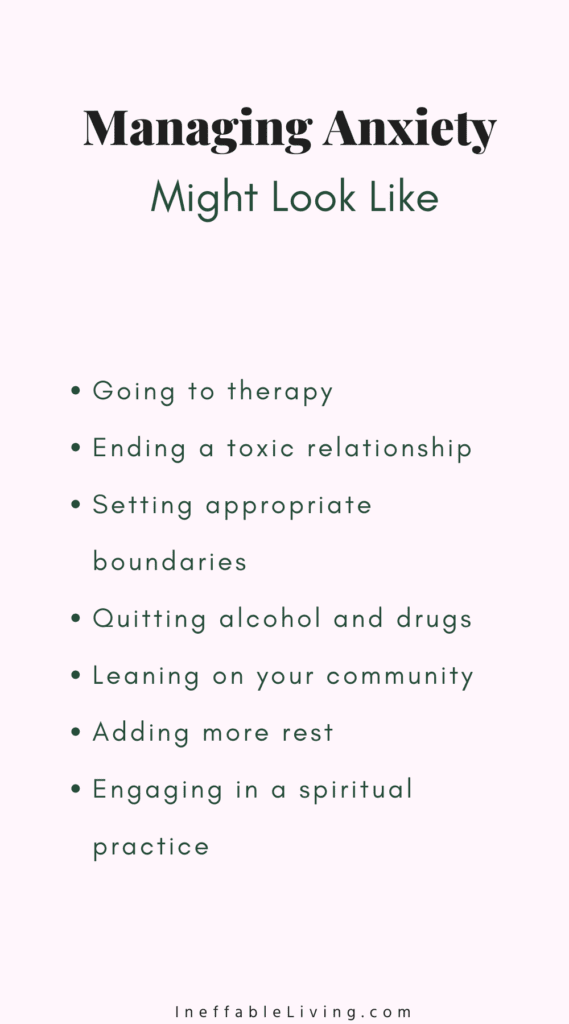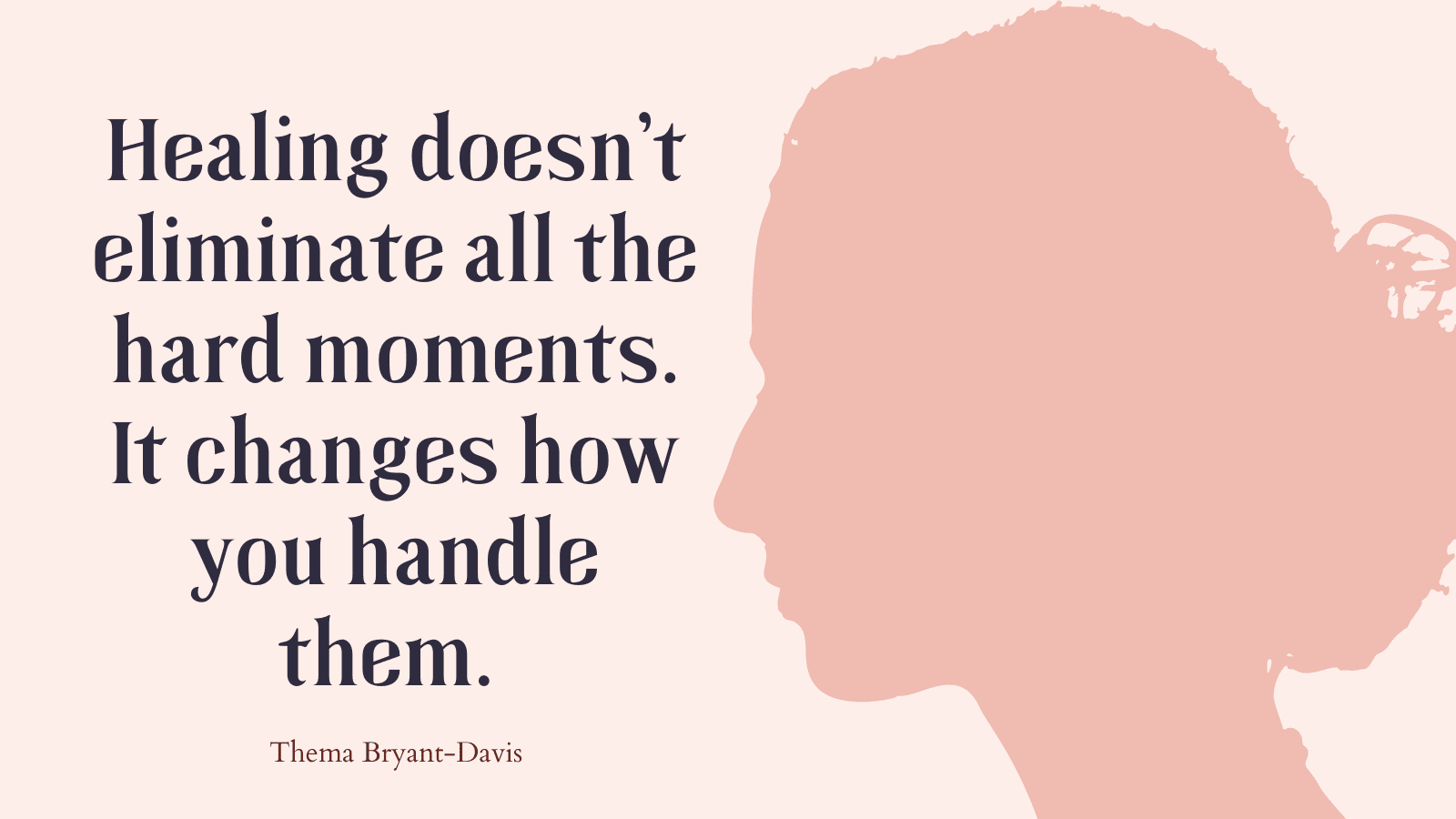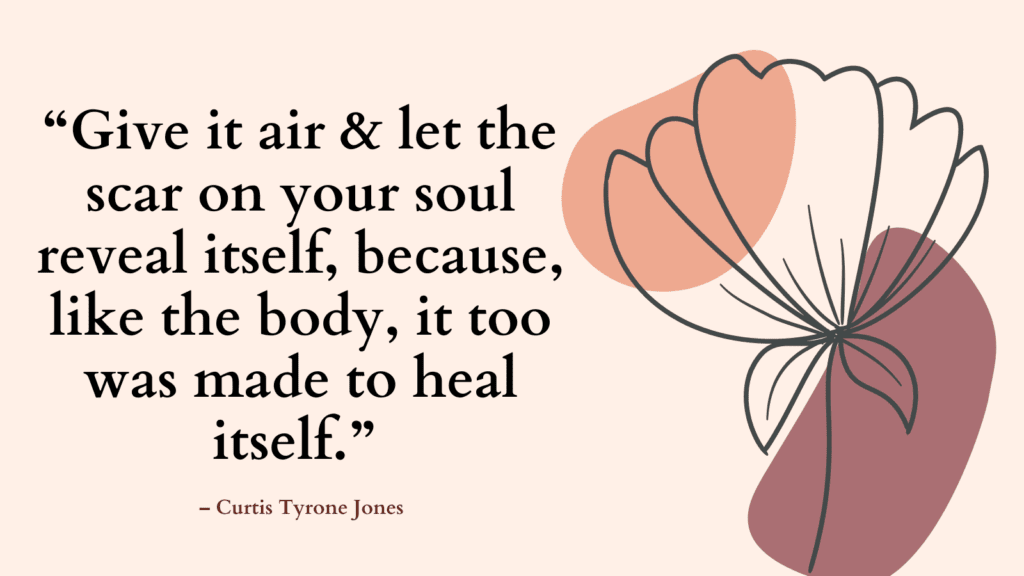Today, you’re going to learn how to use thought work to manage your thoughts.
Thought Work
Thought work is a concept that emphasizes the power of our thoughts and their ability to shape our reality.
It is the process of intentionally examining and altering our beliefs, attitudes, and thought patterns in order to achieve our desired outcomes in life.
By understanding that our thoughts directly influence our emotions and actions, we can take control of our lives and create the life we want through conscious thinking.
For instance, if one often engages in negative self-talk, such as “I’m not good enough” or “things never work out for me,” they may find themselves feeling discouraged and unmotivated.
However, by practicing thought work and challenging these limiting beliefs, they can reframe their thoughts into positive ones, like “I am capable and deserving” or “I can learn and grow from this experience.”
These new, positive beliefs can lead to increased confidence and motivation, and ultimately result in better outcomes.
Related: Negative Core Beliefs List (& 8 Tips On How To Challenge Them)
3 Foundational Principles of Thought Work
1. You are not your thoughts: You are separate from the voice of your mind.
2. Your thoughts—not your circumstances—influence your feelings: It’s how you interpret events and situations that influences how you feel.
3. You can change your thoughts! You have more influence over your mind that you might think. In the same way, you gathered evidence for your old negative thoughts, you can choose a new, more realistic thought and start gathering evidence for its validity.
The Power of Thoughts And How It Shapes Our Reality
The power of thoughts is an incredibly important and often underestimated aspect of our lives.
Our thoughts shape our reality and determine the way we experience the world around us.
Positive thoughts can bring about positive experiences, while negative thoughts can lead to negative experiences.
For example, if you constantly dwell on negative thoughts, such as “I’ll never be successful” or “nothing ever goes right for me”, it becomes difficult to see the positive aspects of your life and opportunities that arise.
This can have a detrimental effect on your mental health and well-being.
On the other hand, if you focus on positive thoughts, such as “I can achieve my goals” or “today will be a good day”, you’re more likely to attract positive experiences and opportunities.
This is because your thoughts and beliefs influence your actions and behaviors, which in turn impact the outcomes of your efforts.
Researchers have found that the power of thoughts not only affects our mental state, but also our physical well-being.
Positive thoughts and emotions have been shown to boost the immune system, lower stress levels, and improve overall health.
It’s important to cultivate positive thoughts and beliefs in order to shape our reality in a positive way.
By focusing on what we want rather than what we don’t want, we can create a happier, healthier and more fulfilling life for ourselves.
Related: How To Stop Self-Critical Thoughts Using These Top 10 Techniques
How to Do Thought Work?
#1. Practice Mindfulness
Mindfulness is the ability to focus your attention on the present moment. It’s the practice of becoming the observer of your own thoughts.
Mindfulness acts like a set of brakes that you can use any time you want.
Mindfulness can be practiced as a meditation practice or throughout the day while doing daily activities.
To begin, practice pausing for a few minutes throughout the day to check-in with yourself.
Each time, ask yourself:
· What am I feeling right now in my body?
· What emotion am I experiencing?
· What thoughts am I having right now? How do these thoughts make me feel?
The goal here is to allow internal experiences and stay present with them, without judgement.
Mindfulness can be a helpful too here. It’s especially made easy to practice with apps such as Calm, Headspace, and Insight Timer.
#2. Identify Your Negative Thoughts
To better identify your negative thoughts, you need to become aware of common cognitive distortions people tend to engage in.
The following are some common cognitive distortions. Some people call them “monkey thoughts” or “stinking thinking.”
1. All-or-Nothing
This is when you look at things in absolute.
For example, anything you do that is less than perfect would be a failure for you.
The truth is black-and-white extremes rarely exist. Things are rarely completely horrible or absolutely perfect.
2. Overgeneralizing
This is when you decide that a negative experience, a specific flaw, or a mistake describe your life completely. Or you might generalize the way you’re feeling right now. If you’re feeling depressed right now, you may assume that you’ll always feel this way.
Watch out for statements that start with “I always . . .” or “I never . . .” or “You always . . .” or “You never . . .”
3. Catastrophizing
This is when you go to the worst possible scenario.
4. Shoulds
This is when you create painfully unrealistic expectations for yourself, which are likely to make you feel more depressed and anxious.
Notice when you say or think to yourself, “I should/shouldn’t…” or, “I must/mustn’t..”
5. Personalization
This is when you assign an unreasonable amount of blame to yourself for things that are beyond your control.
6. Mind Reading
This is when you imagine what others are thinking and take it as a fact, especially when it comes to negative things about you.
7. Fortune Telling
This is when you predict what will happen, especially bad things and take them as facts.
Observe your negative thoughts and label them.
Related: Top 10 Common Examples of Cognitive Distortions – How To Challenge Them (+Worksheets PDF)
#3. Reframe Your Thoughts
Reframing is changing how you see something and then expressing it differently.
Reframing replaces your old way of thinking with a new and more realistic mindset.
Sounds easy in theory, but actually going it can be a little tricky.
This is mainly because our emotions, especially difficult ones, often trump logic.
It can be challenging to change your thoughts when they’re not in line with the way you feel right now…challenging but not impossible!
Once you identified the negative thought you want to change, use the following questions to help you reframe your thought:
- What evidence do I have that what I believe is actually true?
- Do I know for certain that the worst will happen?
- Is there another possible explanation for that person’s behavior that isn’t about me?
- Am I confusing a thought with a fact?
- Am I falling into a thinking trap (e.g., catastrophizing or overestimating danger)?
- How many times has happened before?
- Is so important that my future depends on it?
- If it did happen, what could I do to cope with or handle it?
- Am I condemning myself as a total person on the basis of a single event?
- Am I concentrating on my weakness and forgetting my strengths?
- Am I blaming myself for something which is not really my fault?
- Am I taking something personally which has little or nothing to do with me?
- Am I assuming I can do nothing to change my situation?
- What would I tell a friend if he/she had the same thought?
FREE Challenging Cognitive Distortions Worksheet PDF

Related: Impulsive vs Intrusive Thoughts (& How to Manage Them)
Pro Tip: Seek Professional Help
Therapy is a great resource to help you change negative thoughts.
Whether negative thought patterns are significantly impacting your life or not, you will benefit from therapy.
Psychologist Locator and the National Register are two websites for locating psychologists in USA.
Online therapy is also an option. It can be much affordable than in-person therapy, but can be equally effective. (source)

Conclusion
Thought work is a powerful tool that can help us transform our lives by changing our thoughts.
It takes practice and patience, but with consistent effort, it is possible to create a more positive and fulfilling life.
Related: Best 10 Intrusive Thoughts Books
References
- Negative Thoughts: How to Stop Them (verywellmind.com)
- Identifying Negative Automatic Thought Patterns | Stress & Development Lab (harvard.edu)
- Dimensions of Negative Thinking and the Relations with Symptoms of Depression and Anxiety in Children and Adolescents – PMC (nih.gov)
- Evidence for Transdiagnostic Repetitive Negative Thinking and Its Association with Rumination, Worry, and Depression and Anxiety Symptoms: A Commonality Analysis – PMC (nih.gov)
- What Research Says About Breaking the Negative Thought Cycle (Opinion) (edweek.org)
- Negative Bias: Why We’re Hardwired for Negativity (verywellmind.com)




